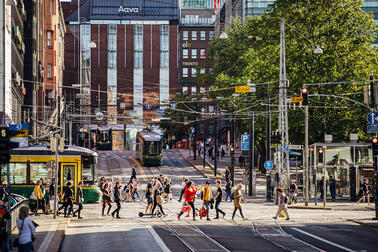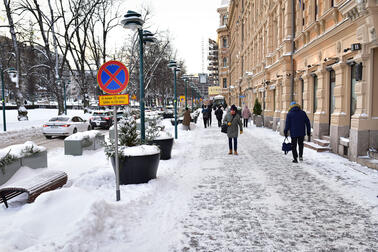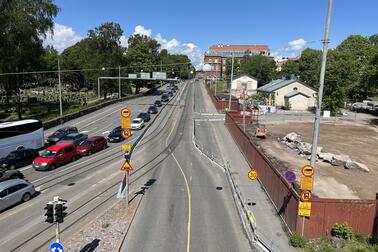
The effects of the Esplanadi trial on the vitality of the area were studied with a survey targeted at the businesses in the area as well as mobile phone location data. 37 businesses, the significant property owners, and event organisers in the area responded to the survey.
Of the businesses in the area, 37.8 per cent said that their sales had not changed from the same period in the previous year. 35.1 per cent reported reduced sales, and 24.3 per cent reported increased sales. Until now, the most positive effects of the trial were felt by the restaurants and cafés in the area. Stores in the area reported the most negative effects.
“We are keeping a close eye on the effects of the Esplanadi trial on the different user groups. Regarding the vitality of the area, I believe that accelerating inflation, remote work, changes in tourism numbers and the structural changes in the retail environment are all factors that have their own effects. Naturally, we will keep a close eye on the results throughout the two-year trial,” says land use director Rikhard Manninen.
“The services and events that businesses organise are significant reasons for people to go to the city centre. That is why we value the opinions of businesses and the City has to hear them, take them seriously, and involve them in developing the next stages of the trial and the area. Based on the results obtained so far, it cannot yet be said that the trial has increased vitality in the area,” says director of economic development Marja-Leena Rinkineva.
Businesses were also asked if they would want to continue the trial after 2024. Of the responses, 37.8 per cent could not say if they wanted to continue the trial, 35.1 per cent said that it should not continue, and 27 per cent said they wanted the trial to continue. We have also monitored how much time people spend in the area through mobile data. The time people spend in the area only saw minor changes.
Responses indicate increased attractiveness in the area
On-site observations and interviews were used to study the social effects. The effects of the trial on the attractiveness of the area were seen to be very positive. Of the responses, 45 per cent gave the highest score, 5, and the average score was 4.1. According to the interviews, plants and greenery, as well as the park-like streets served to improve the attractiveness of the area.
The interviewees were, however, split on the effects on mobility in the trial area. On a scale of 1–5, people gave the flow of vehicle traffic a score of 2.2. However, 78 per cent of the interviewees had either walked or taken public transport to the area. Pedestrian and cyclist safety and convenience was seen to have improved as a result of the trial.
Difficulties for service traffic, slightly improved air quality
The effects on service traffic have been ambivalent: incorrect traffic has decreased, but service traffic is seen to have become more difficult. Particularly, the number of service vehicles driving on the sidewalk has gone down. However, roughly half of the responding businesses said that the environment had weakened for service traffic. According to the survey, service business representatives felt that it was harder to find parking in the area for service traffic than before.
Air quality improved slightly regarding nitrogen oxide concentrations. However, nitrogen oxide levels had been falling on the northern side of Esplanadi since 2020. In 2023, nitrogen oxide levels, after the trial began, were slightly lower than in the reference periods of June–August 2021 and 2022. Various factors influence air quality, and it is difficult to isolate the effect of a single factor.
More results will be made available in late November
Diverse monitoring will be carried out on the Esplanadi trial during the two-year period. These are only the first intermediate results. We are monitoring different modes of traffic, the effect on the flow of car traffic, social effects, effects on vitality, service traffic and air quality, as well as carry out surveys to find out the residents’ opinions on the trial.
The following intermediate results will be published later in November. These results will include, among other things, the opinions of city residents based on a wider-reaching sample survey.


